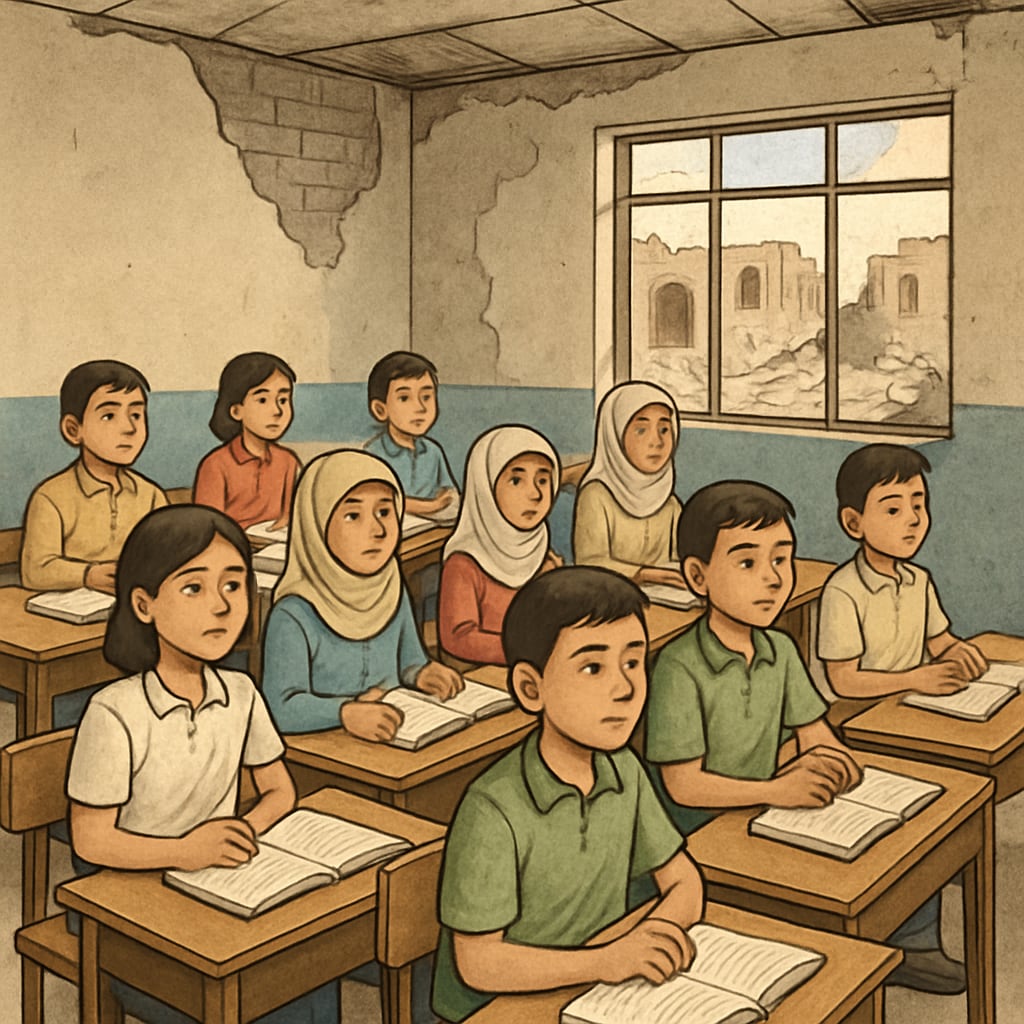Rebuilding education systems in war-affected regions like Gaza presents a unique set of challenges. Developing a curriculum for science and social studies in these schools requires a thoughtful balance between local cultural values and international educational standards. Additionally, integrating peace education and fostering critical thinking skills are vital to support long-term societal recovery. This article delves into the complexities of curriculum design for post-conflict Gaza schools, exploring strategies and opportunities for sustainable educational growth.
Understanding the Challenges of Gaza’s Education Reconstruction
The prolonged conflict in Gaza has left its education system in disarray. Schools are often damaged or destroyed, and many children are deprived of consistent learning opportunities. Designing a science and social studies curriculum for this environment is not as simple as adopting pre-existing frameworks. Instead, it must address unique challenges such as:
- Infrastructure limitations: Many schools lack basic facilities, making it difficult to implement hands-on science experiments or technology-dependent curricula.
- Cultural sensitivity: The curriculum must respect local traditions and values while aligning with global educational benchmarks.
- Trauma-informed education: Students in Gaza often face psychological trauma from conflict, requiring a curriculum that is both supportive and adaptive to their emotional needs.

Key Principles for Curriculum Development in Gaza Schools
To create an effective curriculum for science and social studies in Gaza, educators and policymakers must consider several guiding principles:
1. Balancing Local Identity with Global Standards
A successful curriculum should reflect the cultural heritage and experiences of the students while ensuring they acquire skills and knowledge that meet international standards. For instance, social studies lessons can emphasize local history and geography while incorporating global citizenship topics to broaden students’ perspectives.
2. Promoting Peace Education
Given the region’s history, peace education is essential. Social studies programs should include modules on conflict resolution, empathy, and the importance of coexistence. This approach can help students develop a mindset geared toward reconciliation and collaboration.
3. Encouraging Critical Thinking and Problem-Solving
Science education, in particular, offers an excellent opportunity to foster critical thinking. Practical experiments, even if simplified, can encourage students to hypothesize, analyze, and draw conclusions—skills that are crucial for personal and societal development.

Strategic Steps for Implementation
Designing and implementing a curriculum for Gaza schools requires collaboration among local educators, international organizations, and policymakers. Here are some strategic steps to consider:
- Conduct Community Consultations: Engage local stakeholders, including teachers, parents, and students, to ensure the curriculum aligns with community needs and expectations.
- Provide Teacher Training: Equip educators with the skills to deliver the new curriculum effectively, particularly in areas like trauma-informed teaching and peace education.
- Utilize Flexible Materials: Develop adaptable resources that can be used in schools with varying levels of infrastructure and technology.
- Monitor and Evaluate: Regularly assess the curriculum’s impact and make adjustments based on feedback and outcomes.
Opportunities for Long-Term Growth
Despite the challenges, rebuilding Gaza’s education system offers significant opportunities for long-term societal progress. A well-designed curriculum can serve as a foundation for peacebuilding, economic development, and cultural preservation. By equipping students with critical skills and knowledge, the education system can empower a generation to contribute positively to their community and beyond.
For example, integrating STEM (Science, Technology, Engineering, and Mathematics) subjects into the curriculum can prepare students for future careers in fields that are essential for rebuilding infrastructure and fostering innovation. Similarly, emphasizing global citizenship alongside local identity can help students navigate an increasingly interconnected world.
Rebuilding education in Gaza is not merely about restoring schools; it is about creating an environment where students can thrive academically, emotionally, and socially. By addressing the unique needs of the region and leveraging its strengths, educators and policymakers can design a curriculum that truly supports the region’s recovery and growth.
Readability guidance: The content uses short paragraphs and clear subheadings to enhance readability. Key points are summarized in lists where appropriate, and transitions such as “however,” “in addition,” and “for example” are used to maintain a logical flow. Passive voice is minimized, ensuring active engagement with the subject matter.


